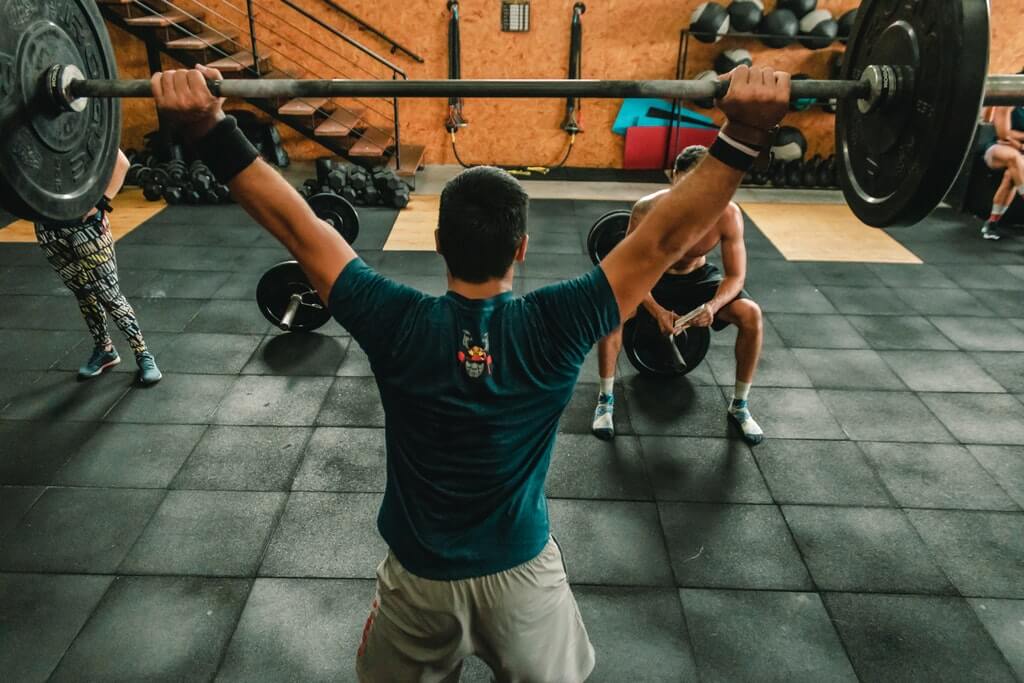Circuit Training vs HIIT – The Definitive Breakdown
As I’m sure you’re aware, the fitness industry is full of conflicting advice. If you’re just starting out, it can seem almost impossible to figure out which workout program is best suited to your aims and goals.
That’s why in this article I’m going to do my best to break down the differences between circuit training and HIIT and give you the best chance of choosing the right program for you.
Without further ado, let’s get straight into it!
Contents
What is the Difference Between Circuit Training and HIIT?
To put it simply, circuit training refers to the practice of performing a series of exercises back-to-back with minimal or no rest.
HIIT training (high intensity interval training), on the other hand, typically consists of performing a single exercise to your maximum potential for a set period of time before taking a break.
Both have their merits, but how can you reach a decision as to which is best for you? Which style of training is best for losing weight, building muscle or improving your cardio endurance?
First, let’s take a look at the facts and the science behind each form of training.
Which Form of Training is Best to Start Out With?
First, why is this important?
When you are new to the world of strength and fitness, it can be very tempting to jump straight in at the deep end and go as hard as humanly possible. In this day and age, we want results, and we want them instantly.
However, and I can’t emphasize this enough…
Start simple, and don’t worry about results at the beginning, they will come with time.
With that said, let’s have a look at what makes each circuit training and HIIT training either good or bad for beginners.
Circuit Training
You can perform circuit training without any equipment and without needing to perform at your max. These factors alone make it an appealing option for the uninitiated.
To do circuit training, all you need to do is complete reps of various exercises with a break at the end.
These exercises can be bodyweight exercises if you don’t yet have the required equipment. This means you can dive straight in without needing to invest your hard-earned cash.
What’s more, there are ways of making circuit training more forgiving. You can extend the period of rest for example, or limit the number of sets or reps for each exercise to make things easier.
Finally, circuit training is fun. Switching exercises on the fly is a great way to keep you motivated and keep the workout enjoyable. This will make you more likely to stick to it when you first start out.
HIIT Training
As for HIIT training, unless you have prior experience performing at your maximum, you might struggle in the beginning.
HIIT training works best when you give it your all, hence the ‘intensity’ part.
As a result, this makes it a more challenging option for the beginner. While not impossible, if your body isn’t used to training hard, you might put yourself at greater risk of injury or at least fatigue.
Plus, HIIT training is often best when you have the right equipment. Training on a stationary bike for a set period of time is more effective than running on the spot for example. This is due to the various settings on the bike which allows you to train at varying levels of difficulty and resistance to maximize results.
Conclusion?
Circuit training is the better of the two for beginners. It’s more enjoyable, requires less effort, and is less likely to lead to fatigue.
If you’re at all interested in taking up some group fitness classes to help you with accountability and motivation, then take a look at this article on our website.
The Pros and Cons of Both Forms of Training
There’s no doubting the fact that both forms of training are effective, but what exactly are the pros and cons of circuit training vs HIIT training?
Circuit Training
Pros
- Keeps your workout fresh and exciting.
- Helps with muscular strength and endurance.
- Works several different muscles in one session.
- Sustained work encourages greater cardio endurance.
- Beginner-friendly.
Cons
- The potential risk of injury is greater than other forms of training.
- It requires planning and preparation.
- It can lead to burnout and fatigue quickly.
HIIT Training
Pros
- Great for shedding fat and burning calories quickly.
- Increases your rate of metabolism even after the workout is completed.
- Reduces overall body fat.
- Builds muscle.
- Strengthens the heart leading to better cardiovascular health.
- Can reduce blood sugar levels.
- Minimal preparation required.
Cons
- It can be repetitive and reduce motivation.
- Working flat out at your maximum potential is exhausting.
- As a beginner, it can seem very challenging.
Conclusion?
HIIT training comes out on top. While it’s undeniable that circuit training is a great form of working out, in terms of benefits from a single session, HIIT training comes out looking best.
Circuit training has the advantage of being more beginner-friendly, and keeps your workout interesting with a variety of exercises.
However, if you are results-driven and determined to better your cardio levels or lose weight, then HIIT training is probably the way to go.
Which Will Help You Burn More Calories?
Both forms of training are great for helping you burn calories and shed pounds, but what does the research say?
Circuit Training
Circuit training ranks highly for workouts which really burn excess calories and help you to lose weight.
Depending on the intensity and effort you put in, you can expect to see great results if weight loss is the goal.
Circuit training has been proved to have the impact of boosting aerobic and metabolic fitness, providing you work out the larger muscles in the body. These benefits even stay with you up to a few days after the workout, meaning you could still be burning calories while sat on the sofa on your rest day.
The important thing to bear in mind when you are circuit training to lose weight is to perform each exercise with great intensity. You should only take your foot off the gas once you get to the end of the circuit and take a break.
If you’re looking for a set circuit workout program to follow, then this full-body circuit workout by Brandan Fokken is well worth a shot.
HIIT Training
HIIT training can seem too good to be true at times, you can work out for a short time flat out and achieve fantastic results over time.
The logic behind this is that you are working your heart into overdrive, and as a result, you are increasing your endurance and general stamina.
As a result, studies have shown HIIT training has the potential to be more effective than traditional cardio with regards to losing weight.
This is if you engage in HIIT training 3 times per week over the course of 15 weeks. So you can imagine the results if you were to up the ante and take on 5 or even 6 sessions per week.
But that’s not all…
There is also evidence to suggest that performing HIIT training can lead to a bigger loss in overall fat mass than with moderate-intensity continuous training like circuit training.
Check out this complete guide to HIIT training over on our website to get a better idea of what to do, and see some of the best workouts out there.
Conclusion?
HIIT training wins this round.
With plenty of evidence detailing the myriad weight loss benefits of this style of training, HIIT training is probably your best bet if weight loss is your goal.
Not only will you be sending your heart into overdrive and building great cardio health, but you will also be able to significantly reduce the overall level of body fat.
At the end of the day, a more intense approach wins out over a more moderate one, at least when it comes to shedding those hard to lose pounds.
If you’re curious how HIIT training fares against the sustained cardio associated with running, check out this post comparing HIIT vs running on our website.
Summary
I hope this definitive breakdown of circuit training vs HIIT has given you some clarity on the two forms of training and what they can do for you.
While HIIT training comes out on top in several head-to-heads, circuit training is by no means a less effective option for working out.
Depending on your goals, select the type of training that best aligns with what you’re looking to get out of it.
If you want to read more about different workout programs and ways you can up your fitness game, I encourage you to subscribe to our newsletter.





